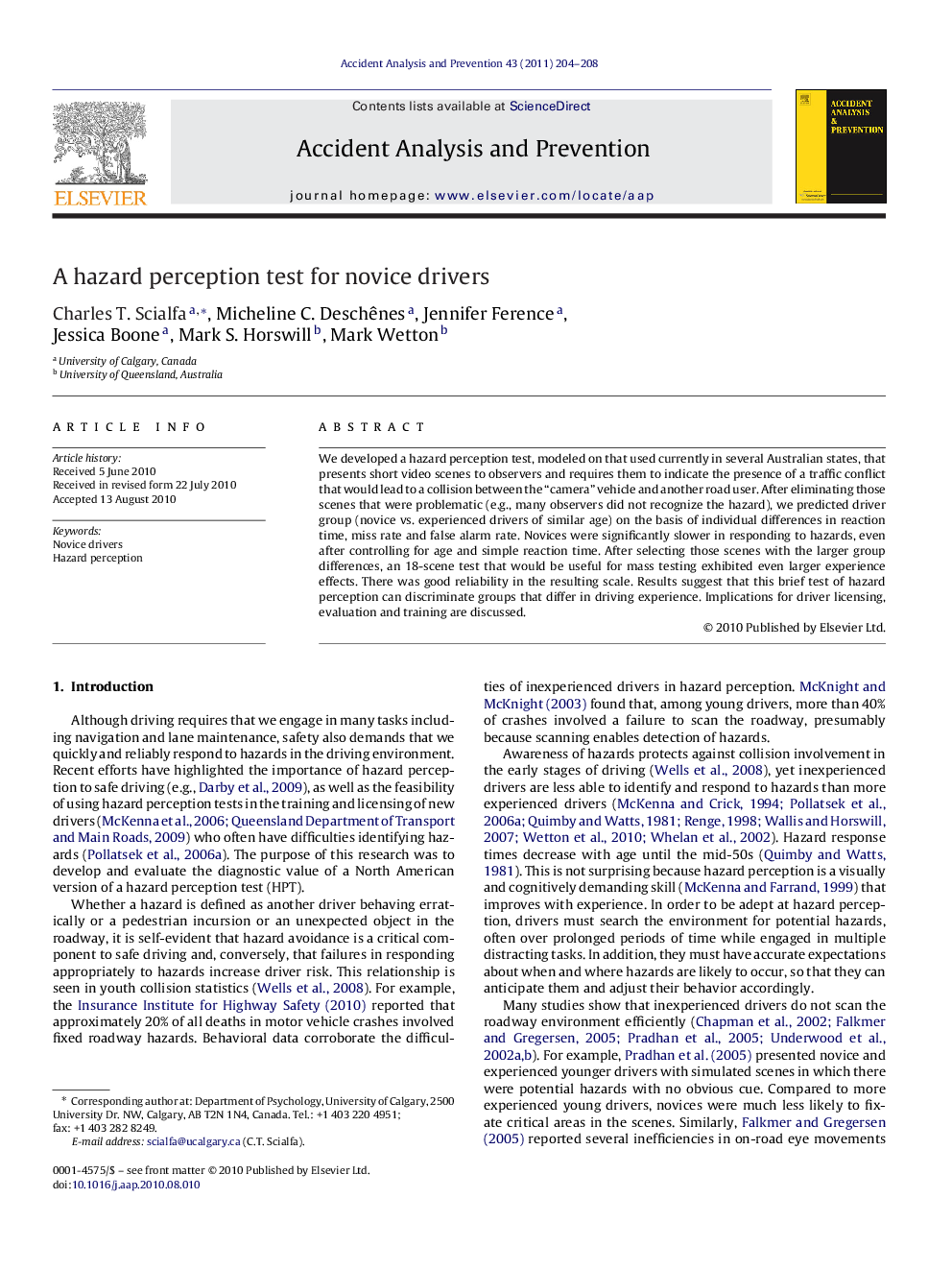| Article ID | Journal | Published Year | Pages | File Type |
|---|---|---|---|---|
| 572749 | Accident Analysis & Prevention | 2011 | 5 Pages |
We developed a hazard perception test, modeled on that used currently in several Australian states, that presents short video scenes to observers and requires them to indicate the presence of a traffic conflict that would lead to a collision between the “camera” vehicle and another road user. After eliminating those scenes that were problematic (e.g., many observers did not recognize the hazard), we predicted driver group (novice vs. experienced drivers of similar age) on the basis of individual differences in reaction time, miss rate and false alarm rate. Novices were significantly slower in responding to hazards, even after controlling for age and simple reaction time. After selecting those scenes with the larger group differences, an 18-scene test that would be useful for mass testing exhibited even larger experience effects. There was good reliability in the resulting scale. Results suggest that this brief test of hazard perception can discriminate groups that differ in driving experience. Implications for driver licensing, evaluation and training are discussed.
Research highlights▶ The ability to identify roadway hazards is predictive of collision risk and deficient in novice drivers. ▶ We developed a video-based hazard perception test of representative North American driving scenarios. ▶ Novice drivers were slower to respond to these hazards relative to like-aged young drivers. ▶ A subset of scenes with good reliability successfully discriminated these two groups. ▶ Future work will be directed toward replication, parallel development of static tests and assessment of other at-risk groups.
